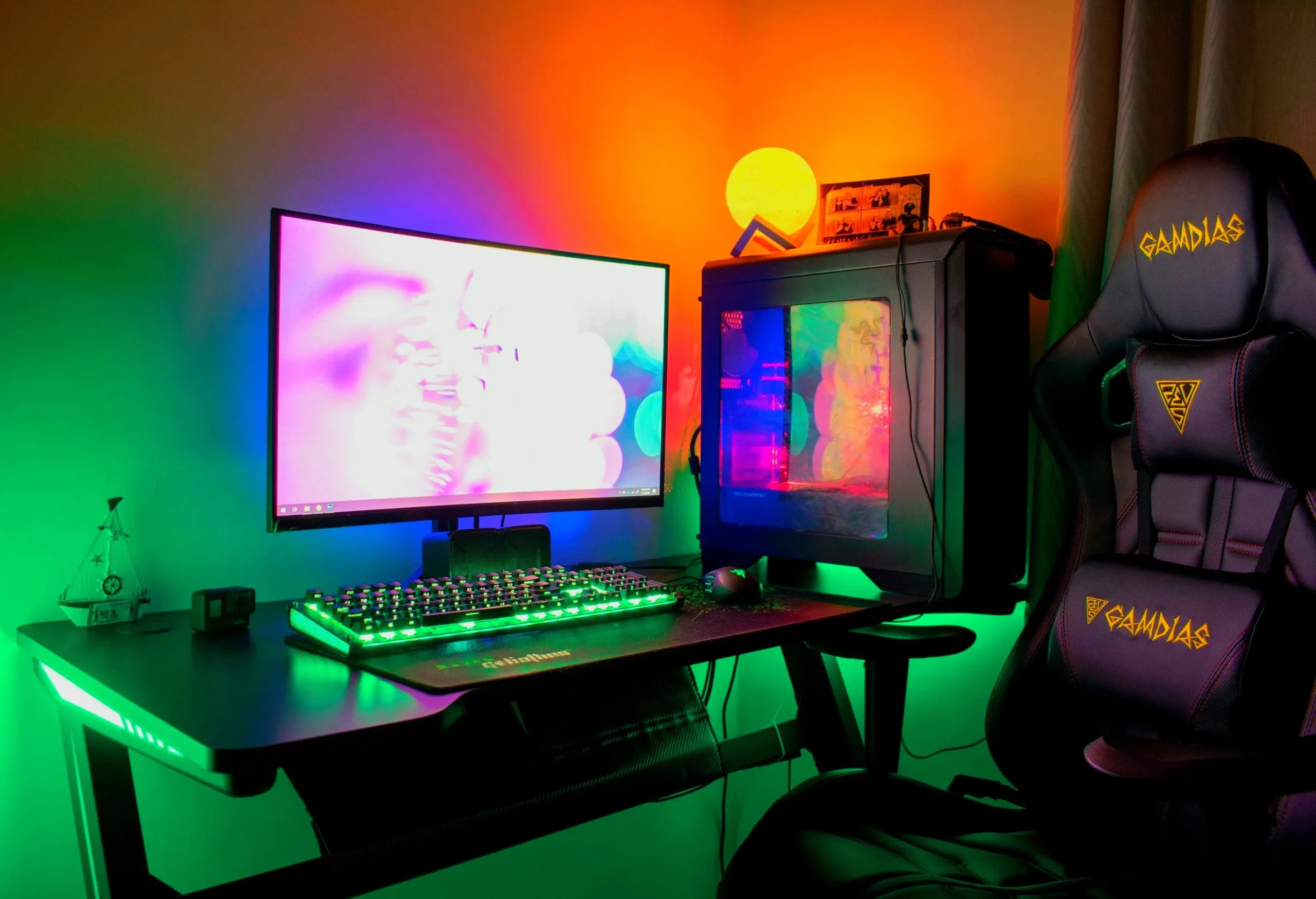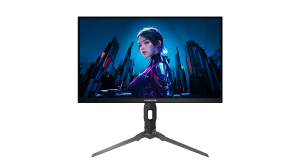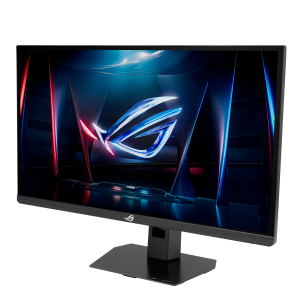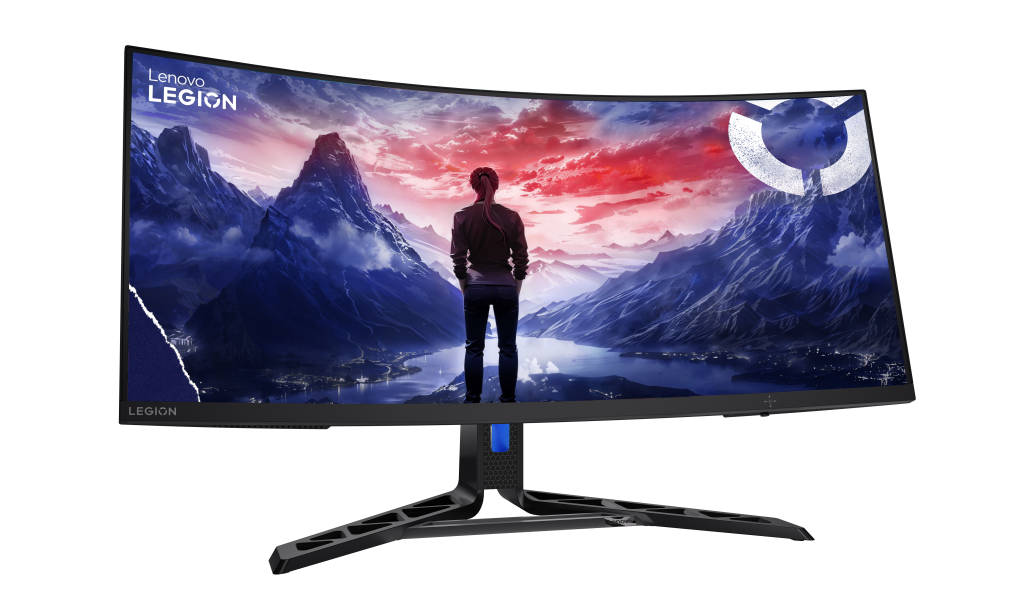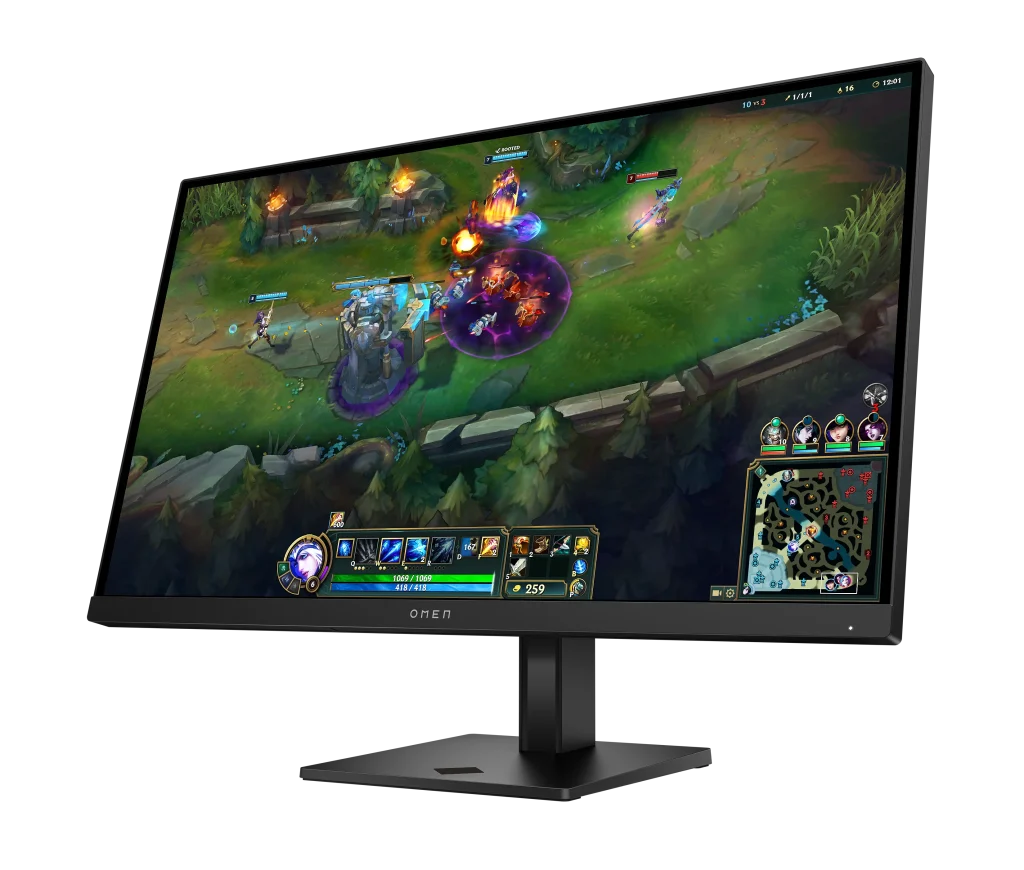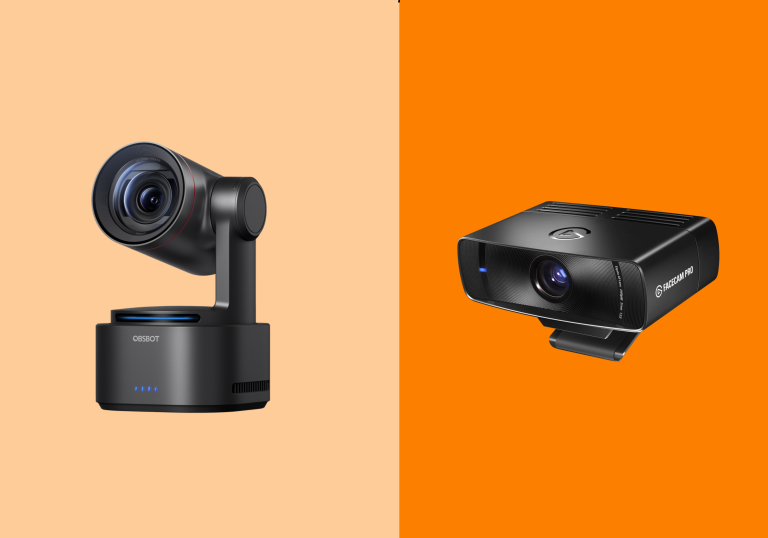Frames win games—and in the heat of a match, every millisecond counts. Your monitor isn’t just a screen; it’s a critical part of your gear that can either sharpen your skills or hold them back. The best gaming monitor keeps pace with your reactions, delivering high refresh rates, ultra-low input lag, and flawless motion clarity that ensures nothing slips past you. Technologies like G-Sync and FreeSync eliminate screen tearing, while lightning-fast response times give you the edge when timing is everything. From 1080p speed demons to 1440p sweet spots and razor-sharp 4K displays, we’ve tested and selected monitors built for serious play. And if your battle station also doubles as a home office setup, these monitors strike the balance between performance and productivity. If you’re aiming to climb the ranks, land flick shots with precision, or just experience smooth, tear-free gameplay at its finest—these are the gaming monitors worth your attention.
Top Picks Chosen with Care
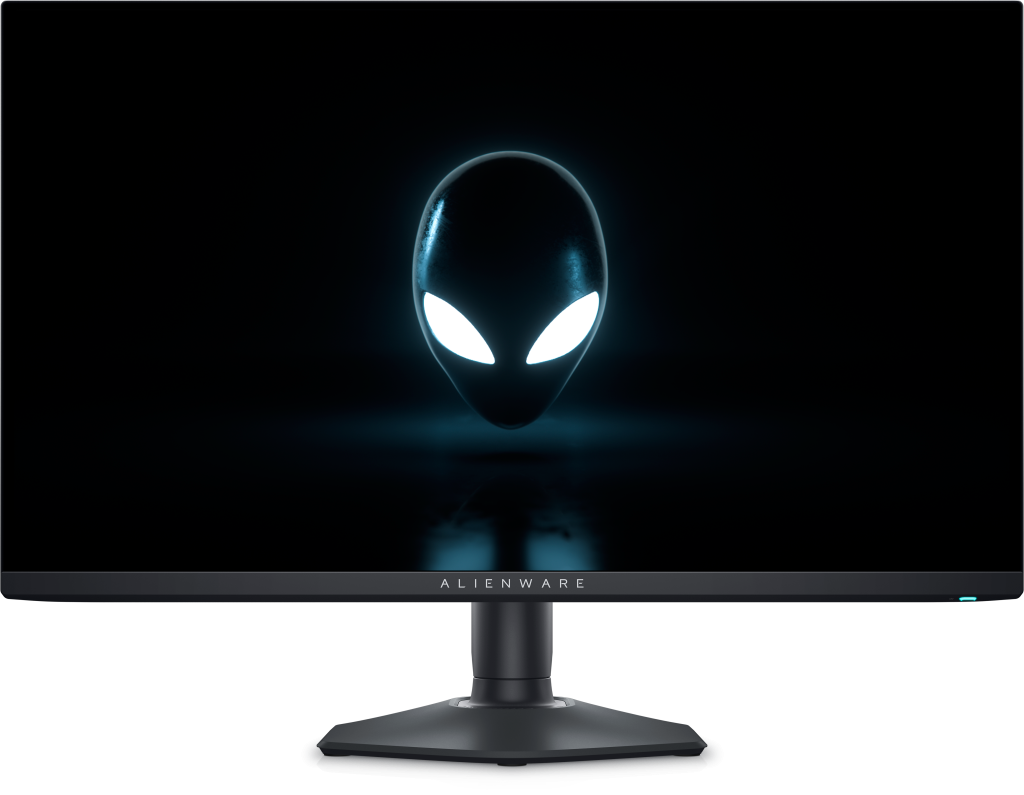
Best high refresh rate gaming monitor for serious speed
Alienware 2725DF QD-OLED Gaming Monitor
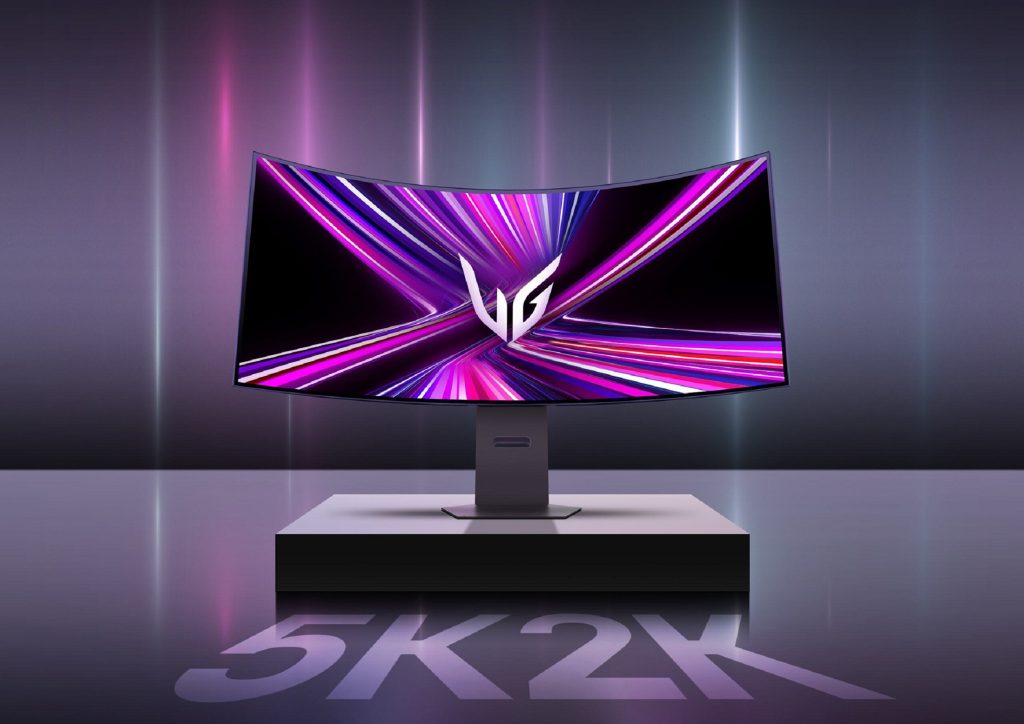
Best super ultrawide gaming monitor for multitaskers
LG UltraGear Gx9 5K2K Gaming Monitor
In-Depth Look: Top Picks Chosen with Care
We research each product thoroughly before featuring it — using trusted reviews and expert sources, not direct testing. Some links may earn us a commission, helping keep the site free for readers
Related Posts
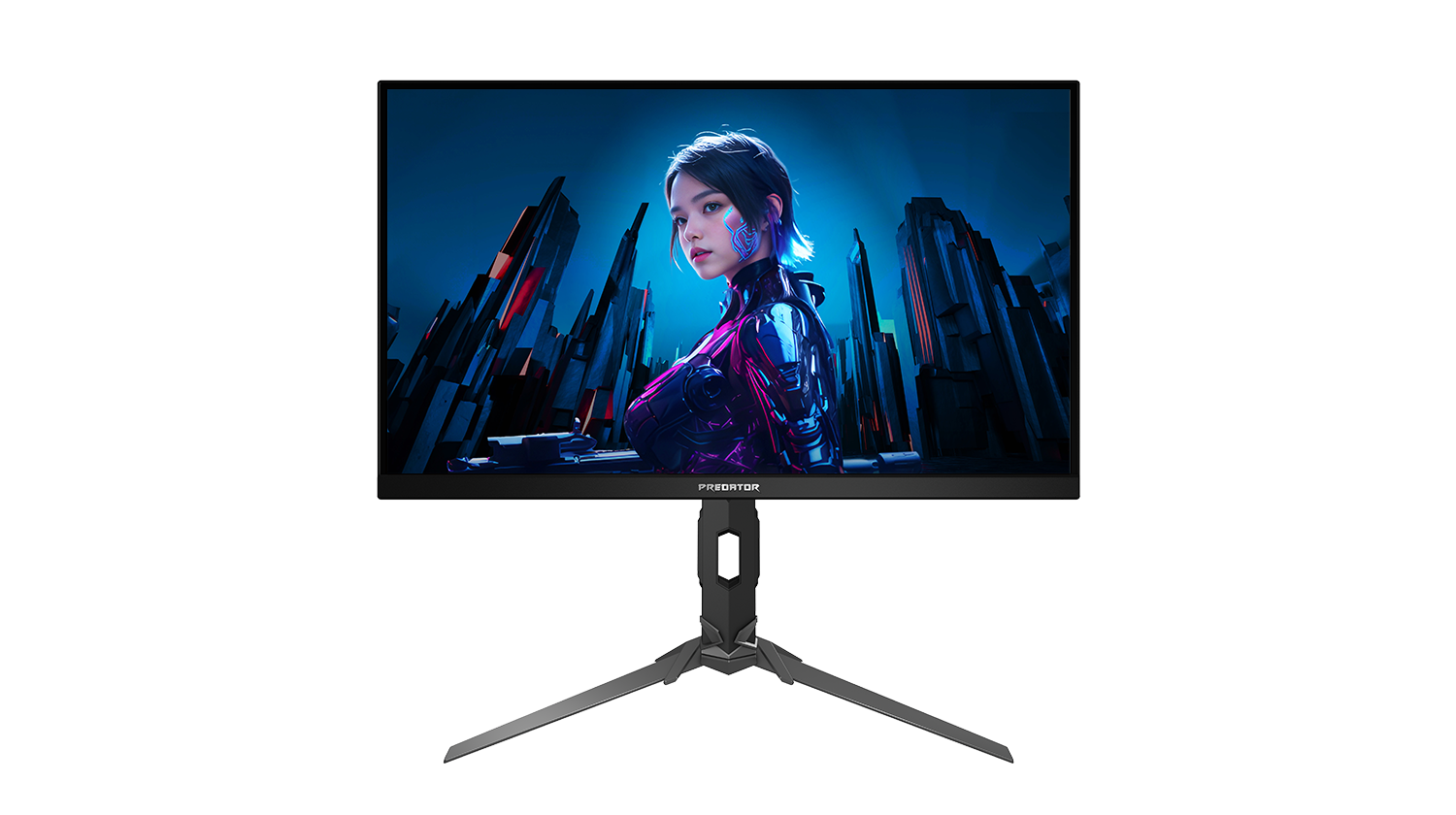
Best all-round gaming monitor for QHD performance
Acer Predator XB273U F5
| Screen Size | 27 inches |
| Resolution | 2560 x 1440 (QHD) |
| Panel Type | Fast IPS |
| Refresh Rate | 360Hz (native) |
| Response Time | 0.5ms GtG |
| Color Gamut | DCI-P3 95% |
| HDR Support | DisplayHDR 600 |
| Brightness | 400 nits (typ), ~600 peak (HDR) |
| Variable Refresh | NVIDIA G-Sync Compatible |
| Ports | 1x DisplayPort 1.4, 2x HDMI 2.1, 4x USB-A 3.0 |
| Ergonomics | Tilt, swivel, pivot, height-adjustable |
| Extras | Built-in speakers, ambient lighting, VisionCare tech |
If you’re hunting for a 1440p monitor that nails both esports-level responsiveness and immersive visuals, the Predator XB273U F5 lands in a sweet spot. It pushes a blazing-fast 360Hz refresh rate at WQHD resolution, something usually reserved for high-end 1080p monitors. Paired with a vibrant Fast IPS panel and wide color gamut, this screen doesn’t force you to choose between speed and quality—you get both. Add in NVIDIA G-Sync compatibility and some smart motion tuning, and it’s easy to see why this model made our list.
Whether you’re fragging in Valorant, grinding in Diablo IV, or just vibing in Cyberpunk 2077, the XB273U F5 delivers razor-sharp clarity with buttery-smooth motion.
| Pros | Cons |
|---|---|
| Ultra-fast 360Hz refresh rate at 1440p | No USB-C |
| Accurate colors with 95% DCI-P3 coverage | HDR 600 is decent, but not elite |
| Great motion clarity with low input lag | |
| Wide port selection including HDMI 2.1 | |
| Ergonomic stand with premium build |
This is built for gamers who want speed and sharpness in one package. If you’re upgrading from a 1080p 144Hz panel and want a serious bump in both fidelity and performance, the XB273U F5 is a killer pick. It’s perfect for:
Content-conscious gamers who want vibrant, calibrated visuals alongside smooth gameplay
Competitive FPS players who want faster-than-average refresh without dropping to Full HD
PC and console gamers using modern GPUs or HDMI 2.1-capable devices
get it now
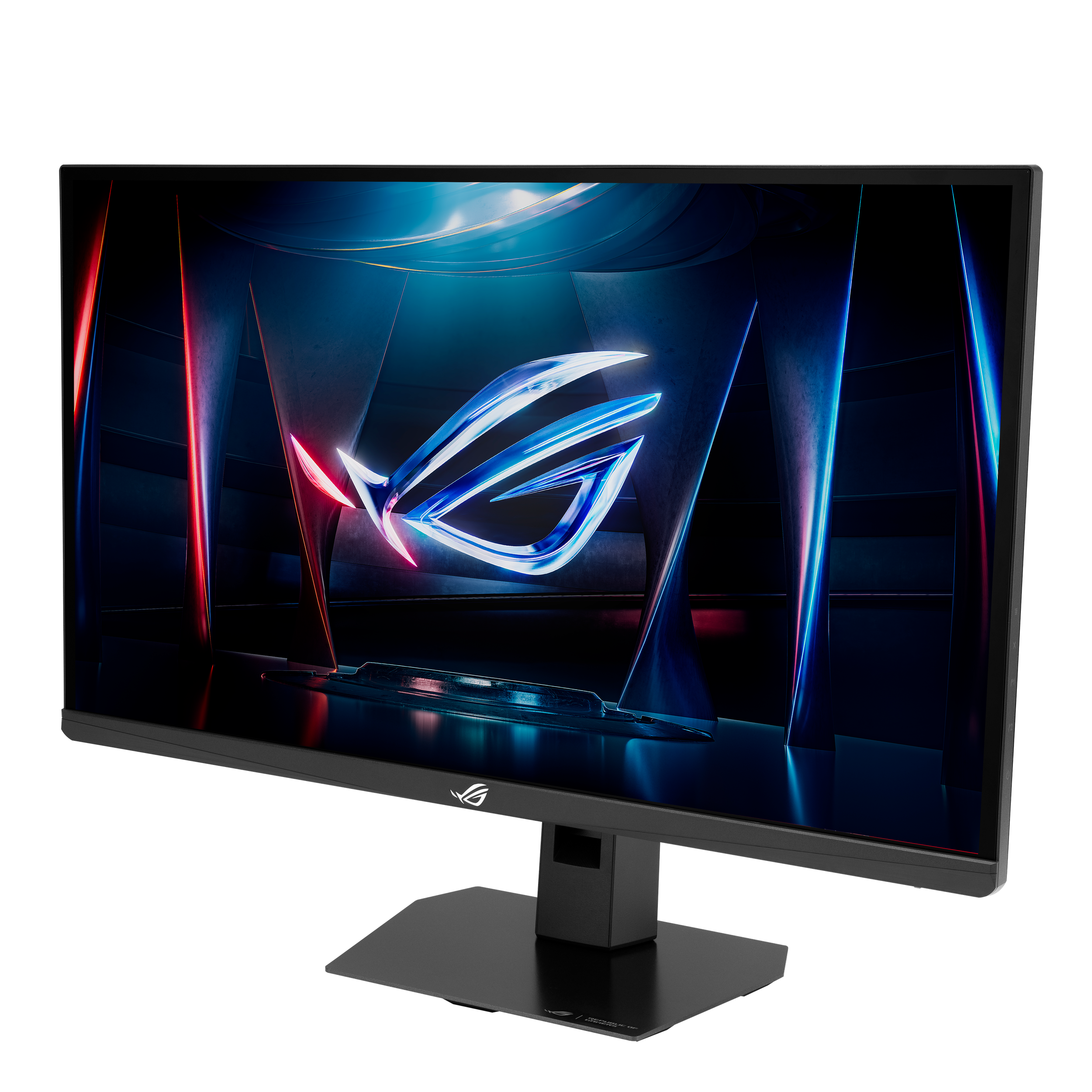
Best gaming monitor for competitive esports players
ROG Strix Ace XG248QSG
| Feature | Details |
|---|---|
| Screen Size | 24.1 inches |
| Resolution | 1920 x 1080 (Full HD) |
| Panel Type | Fast IPS |
| Refresh Rate | 540Hz (overclocked) |
| Response Time | 0.2ms GtG |
| Color Gamut | 110% sRGB / ~95% DCI-P3 |
| HDR Support | DisplayHDR 400 |
| Brightness | 400 nits |
| Variable Refresh | NVIDIA G-Sync Compatible, FreeSync Premium |
| Ports | 1x DisplayPort 1.4, 2x HDMI 2.0, 2x USB-A 3.2, 1x USB-B |
| Ergonomics | Height, tilt, swivel, pivot adjustable |
| Extras | ELMB Sync, low-blue light tech, anti-glare coating |
If you’re all about raw speed and pinpoint precision, the ROG Strix XG248QSG is built for you. This 24.1-inch 1080p monitor pushes an insane 540Hz refresh rate, putting it among the fastest displays available to consumers right now. ASUS didn’t just slap on a big number, either—this screen is built with pro-level esports in mind, with near-zero input lag, blazing 0.2ms GtG response, and sharp motion clarity even during twitchy aim duels in CS2 or Valorant.
Unlike some speed-focused monitors that cut corners on visuals, the XG248QSG uses a Fast IPS panel, so you’re getting accurate colors and great viewing angles—no washed-out grays here. If milliseconds matter to you, this one’s a beast.
| Pros | Cons |
|---|---|
| Ultra-fast 540Hz refresh rate for esports | 1080p resolution limits multitasking or immersive play |
| Exceptional motion clarity with ELMB Sync | Requires high-end GPU for full performance |
| Fast IPS panel with accurate colors | |
| Compact size ideal for competitive setups | |
| Ergonomic stand with clean design |
The XG248QSG is tailor-made for competitive gamers—particularly those playing fast-paced shooters where every millisecond matters. If you’re chasing rank in Valorant, CS2, or Overwatch 2, and want a monitor that won’t hold you back, this is it.
Best for:
- Gamers who prioritize raw speed over resolution or cinematic visuals
- Esports and tournament-level FPS players
- High-FPS PC gaming setups (RTX 4070+ tier)
get it now
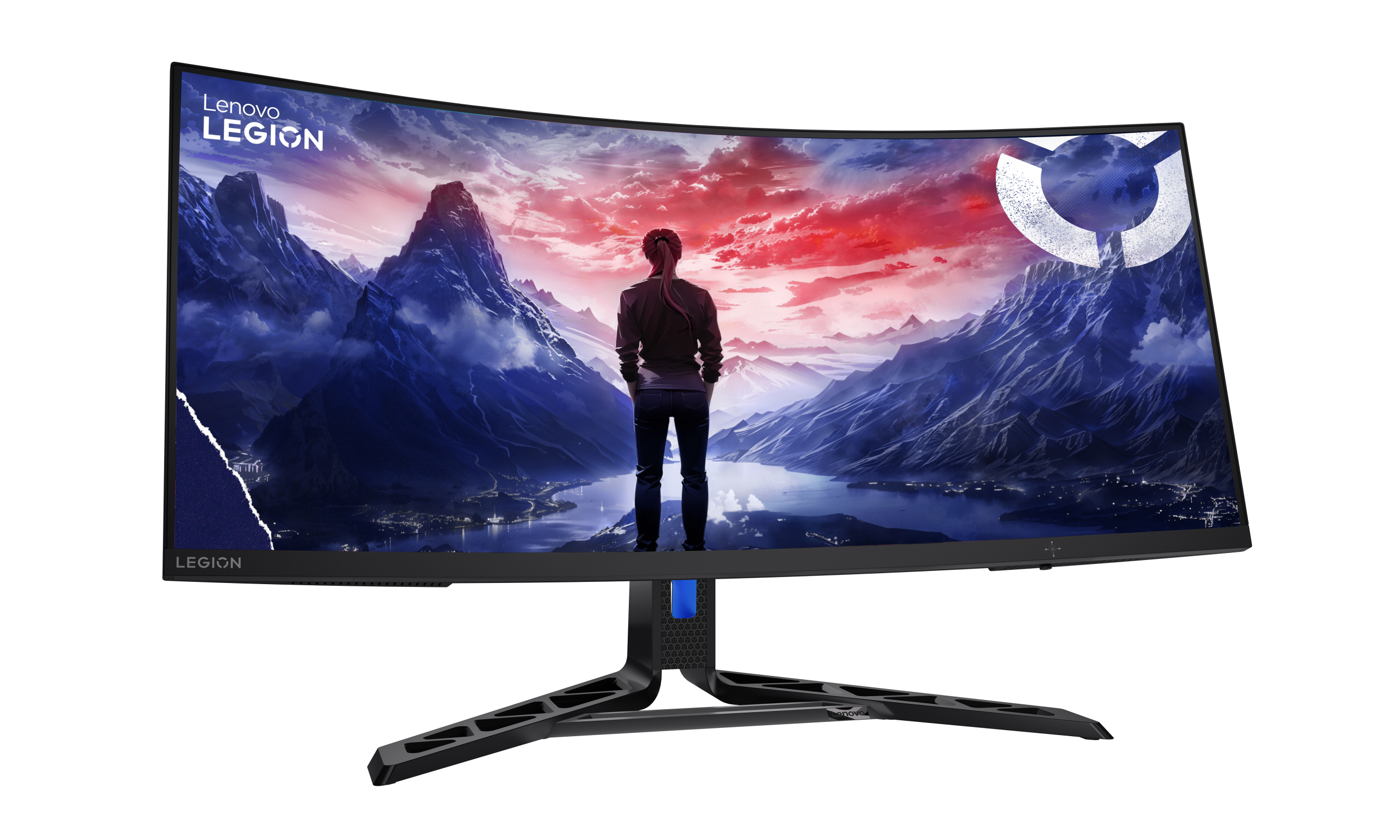
Best ultrawide gaming monitor for immersive setups
Legion Pro R34w-30
| Screen Size | 34 inches (21:9 aspect ratio) |
| Resolution | 3440 x 1440 (WQHD) |
| Panel Type | Fast IPS |
| Curve | 1500R |
| Refresh Rate | 180Hz |
| Response Time | 0.5ms MPRT |
| Color Gamut | 99% sRGB / ~95% DCI-P3 |
| HDR Support | DisplayHDR 400 |
| Brightness | 400 nits |
| Variable Refresh | AMD FreeSync Premium, G-Sync Compatible |
| Ports | 1x HDMI 2.1, 1x DP 1.4, 1x USB-C (140W), 4x USB-A, 1x USB-B |
| Ergonomics | Height, tilt, swivel adjustable |
| Extras | KVM switch, USB-C power delivery, cable management, RGB lighting |
The Legion Pro R34w-30 hits that sweet spot between cinematic immersion and gaming performance. With a 34-inch curved WQHD display, 180Hz refresh rate, and Fast IPS panel, it gives you wide, fluid visuals perfect for open-world games, racing sims, and even fast-paced shooters. Unlike many ultrawides that compromise on refresh rate or color quality, this model brings the best of both: speed, color fidelity, and high resolution.
It also includes thoughtful extras like USB-C with 140W charging, a built-in KVM switch, and a sleek, gamer-friendly design. Whether you’re gaming, streaming, or multitasking, the Legion Pro R34w-30 covers all bases.
| Pros | Cons |
|---|---|
| Wide 34” WQHD screen with vibrant IPS colors | Large footprint—needs space |
| Smooth 180Hz refresh rate with fast response | HDR is entry-level (DisplayHDR 400) |
| USB-C with 140W charging + KVM switch | |
| Accurate color reproduction for gaming and work | |
| Stylish, functional design with good build quality |
The Legion Pro R34w-30 is ideal for gamers who want immersion without sacrificing speed. It’s especially great for:
- Open-world, racing, and RPG fans who love a wide FOV
- Streamers or multitaskers who benefit from the extra screen real estate
- Gamers who want one monitor for work + play, thanks to USB-C and KVM
It’s not a hyper-focused esports display, but it’s an excellent pick for balanced gaming and productivity in an ultrawide form factor.
get it now
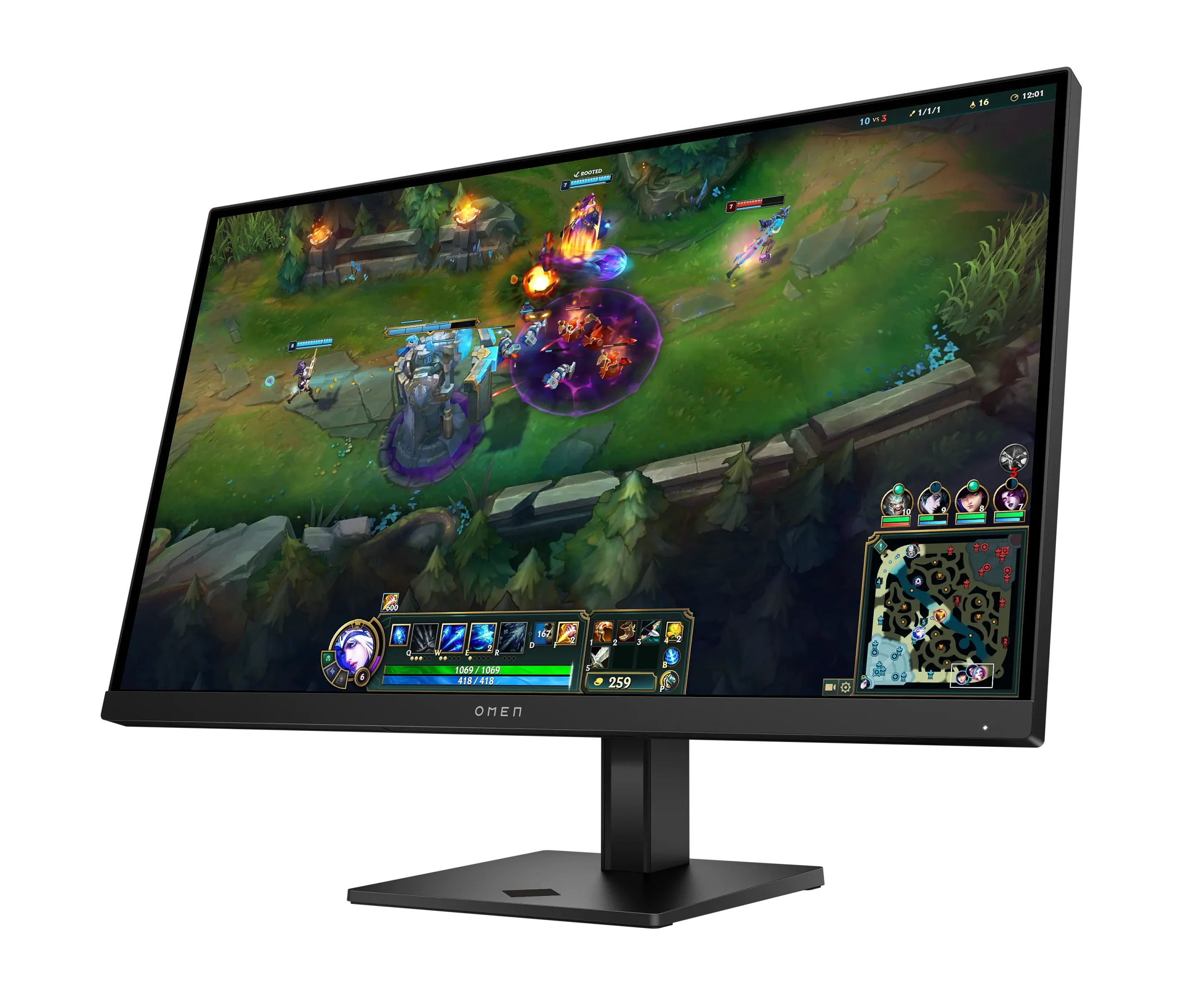
Best budget-friendly gaming monitor at 1440p
HP Omen 27 G2 Series
| Screen Size | 27 inches |
| Resolution | 2560 x 1440 (QHD) |
| Panel Type | Fast IPS |
| Refresh Rate | 180Hz |
| Response Time | 1ms GtG |
| Color Gamut | ~99% sRGB |
| HDR Support | HDR10 (basic tone mapping) |
| Brightness | 400 nits |
| Variable Refresh | AMD FreeSync Premium, G-Sync Compatible |
| Ports | 1x DisplayPort 1.4, 1x HDMI 2.0, 1x USB-C (video), 2x USB-A |
| Ergonomics | Tilt, height-adjustable |
| Extras | Cable routing, anti-glare coating, slim bezel design |
The HP Omen 27q G2 doesn’t try to reinvent the wheel — and that’s exactly why it works. It’s a sharp, responsive 1440p gaming monitor that just gets it right where it matters. With a 180Hz refresh rate and a Fast IPS panel, this thing delivers silky motion and punchy visuals that look great out of the box. You’re not dealing with washed-out TN colors or ghosting trails here. It’s tuned for the kind of gamers who care about crisp detail and fast reaction times, but aren’t chasing 500Hz madness.
It even sneaks in a USB-C port for some extra modern flexibility (hello, laptop gaming setups) and keeps the design clean enough to fit into just about any desk space. No fluff, no RGB overload—just a solid performer that delivers premium specs without the premium tax.
| Pros | Cons |
|---|---|
| Crisp 1440p resolution at a smooth 180Hz | HDR support is basic |
| Fast IPS panel with great color and viewing angles | Stand lacks swivel or pivot |
| USB-C input adds flexibility for laptops | |
| Clean, minimal design that fits any setup | |
| Excellent value for the price |
The Omen 27q G2 is perfect for gamers who want sharp visuals and fast refresh at a fair price. It’s especially well-suited for:
- Competitive gamers looking to upgrade from 1080p without overpaying
- First-time QHD buyers who want both performance and color
- Laptop users or students who can take advantage of the USB-C input
- Minimalists who prefer sleek, distraction-free setups
This monitor doesn’t scream for attention — but it earns it once the game boots up.
get it now
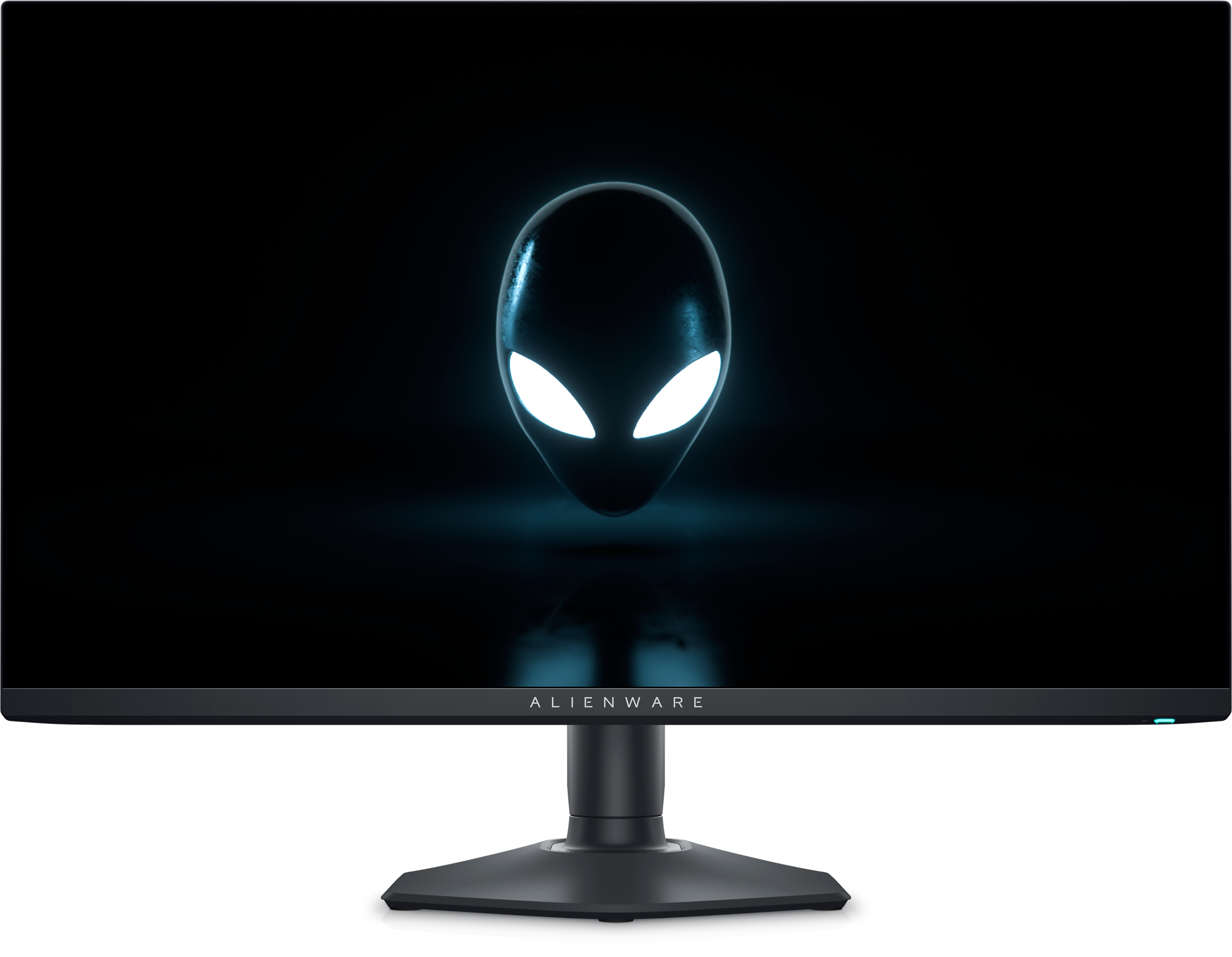
Best high refresh rate gaming monitor for serious speed
Alienware 2725DF-OLED Gaming Monitor
| Screen Size | 26.5″ (marketed as 27″) |
| Resolution | 2560 x 1440 (QHD) |
| Panel Type | QD-OLED |
| Refresh Rate | 360Hz |
| Response Time | 0.03ms GtG |
| Color Coverage | 99.3% DCI-P3 |
| HDR Support | DisplayHDR True Black 400 |
| Peak Brightness | ~1000 nits (HDR) |
| VRR Support | FreeSync Premium Pro, G-Sync Compatible |
| Ports | 1x DisplayPort 1.4, 2x HDMI 2.1, 1x USB-B, 4x USB-A 3.2, headphone out |
| Ergonomics | Height, tilt, swivel, pivot |
| Extras | Anti-reflective coating, AlienFX lighting, KVM switch |
Alienware didn’t just throw high-end specs at a wall with the AW2725DF—they nailed the execution. This 27-inch QD-OLED monitor is built for gamers who want no-compromise performance without giving up gorgeous image quality. With a blistering 360Hz refresh rate, near-instant 0.03ms response time, and deep OLED contrast, it’s a display that feels just as fast as it looks stunning.
It’s clearly designed with both the competitive crowd and single-player purists in mind. You can dominate in esports titles thanks to the responsiveness, then kick back with cinematic games and enjoy rich blacks and vibrant color. Toss in DisplayHDR True Black 400, HDMI 2.1 for next-gen consoles, a reliable USB hub, and Alienware’s sleek design—and you’ve got a high-end monitor that actually lives up to its flagship label.
| Pros | Cons |
|---|---|
| Superb QD-OLED contrast and color fidelity | Potential long-term OLED burn-in risk |
| Blazing 360Hz refresh rate with minimal input lag | Price is steep for casual gamers |
| Sharp HDR with deep blacks and true highlights | |
| Premium Alienware aesthetics and build | |
| HDMI 2.1 for PS5/Xbox Series X gaming |
The AW2725DF is built for competitive players and visuals snobs alike. If you’re grinding ranks in Valorant or Overwatch and demand pinpoint clarity with zero delay, this monitor was made for you. But it’s just as impressive for immersive single-player titles like Cyberpunk 2077, where OLED’s depth really shines. Ideal for:
- Esports and fast-paced shooter fans
- Gamers with high-end GPUs pushing 1440p 300+ FPS
- OLED enthusiasts who want next-gen color and contrast
- Streamers or creators who multitask and value display precision
It’s not a budget buy — but it’s arguably the best 27″ gaming monitor you can get right now.
get it now
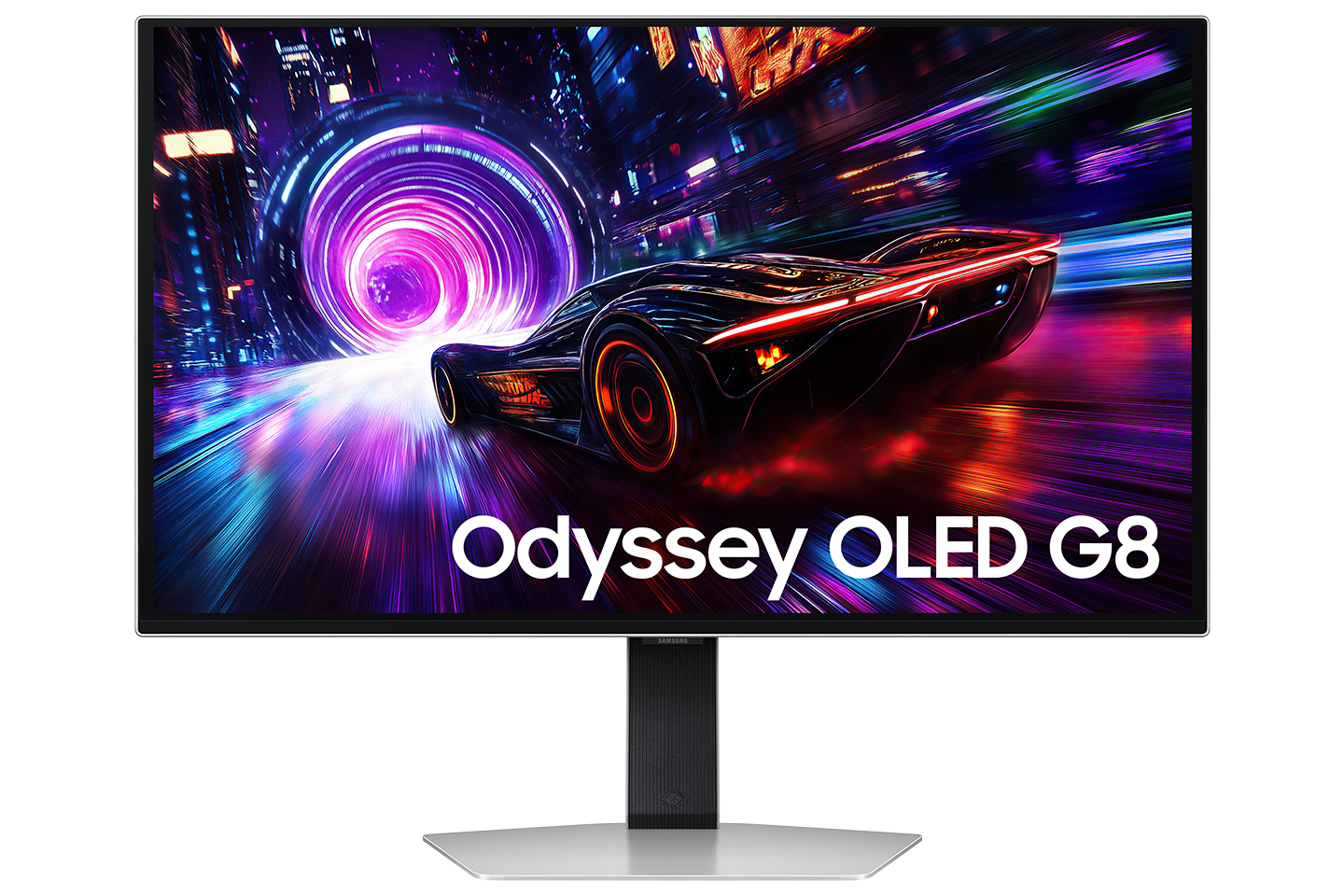
Best OLED gaming monitor for vibrant, smooth gameplay
Samsung Odyssey OLED G8
| Screen Size | 34 inches (Curved 1800R) |
| Resolution | 3440 x 1440 (UWQHD) |
| Panel Type | QD-OLED |
| Refresh Rate | 175Hz |
| Response Time | 0.03ms GtG |
| Color Coverage | 99.3% DCI-P3 |
| HDR Support | DisplayHDR True Black 400 |
| Peak Brightness | ~1000 nits (HDR) |
| VRR Support | FreeSync Premium Pro, G-Sync Compatible |
| Ports | 1x Mini DisplayPort 1.4, 1x Micro HDMI 2.1, 1x USB-C (DP Alt), 2x USB-A |
| Smart Features | Tizen OS, Samsung Gaming Hub, Smart TV apps |
| Ergonomics | Height, tilt adjustable |
| Extras | CoreSync RGB, built-in speakers, remote control |
The Samsung Odyssey OLED G8 stands out for delivering a premium OLED experience in a curved ultrawide format that’s ideal for immersive gaming. Its 34-inch QD-OLED panel offers excellent contrast, deep blacks, and rich color, while the 175Hz refresh rate and 0.03ms response time make it a serious performer for fast-paced titles. The build quality is solid, the design is minimal and sharp, and extras like built-in Smart Hub streaming apps give it added versatility beyond gaming. For players who want both responsiveness and immersion without going full 49-inch, the OLED G8 is a smart middle ground.
| Pros | Cons |
|---|---|
| Vivid QD-OLED contrast with ultrawide immersion | Lacks full-size DisplayPort and HDMI ports |
| Ultra-fast 0.03ms response for fluid gameplay | Limited ergonomic range (no swivel/pivot) |
| Premium design with aluminum body and CoreSync | |
| Built-in Smart TV features for non-gaming use | |
| Fantastic HDR brightness for an OLED panel |
The Odyssey OLED G8 is ideal for gamers who want a cinematic, immersive experience without going full 4K or 49-inch super ultrawide. It hits the sweet spot (yes, this time we’ll allow it) for:
- Immersive single-player and story-driven gamers
- Content creators who need rich contrast and workspace
- PC users with premium setups who want OLED visuals in ultrawide format
- Streamers or media lovers who’ll actually use Smart TV features
It’s a hybrid monitor that doesn’t force you to choose between performance, aesthetics, or versatility—it brings all of it together.
get it now
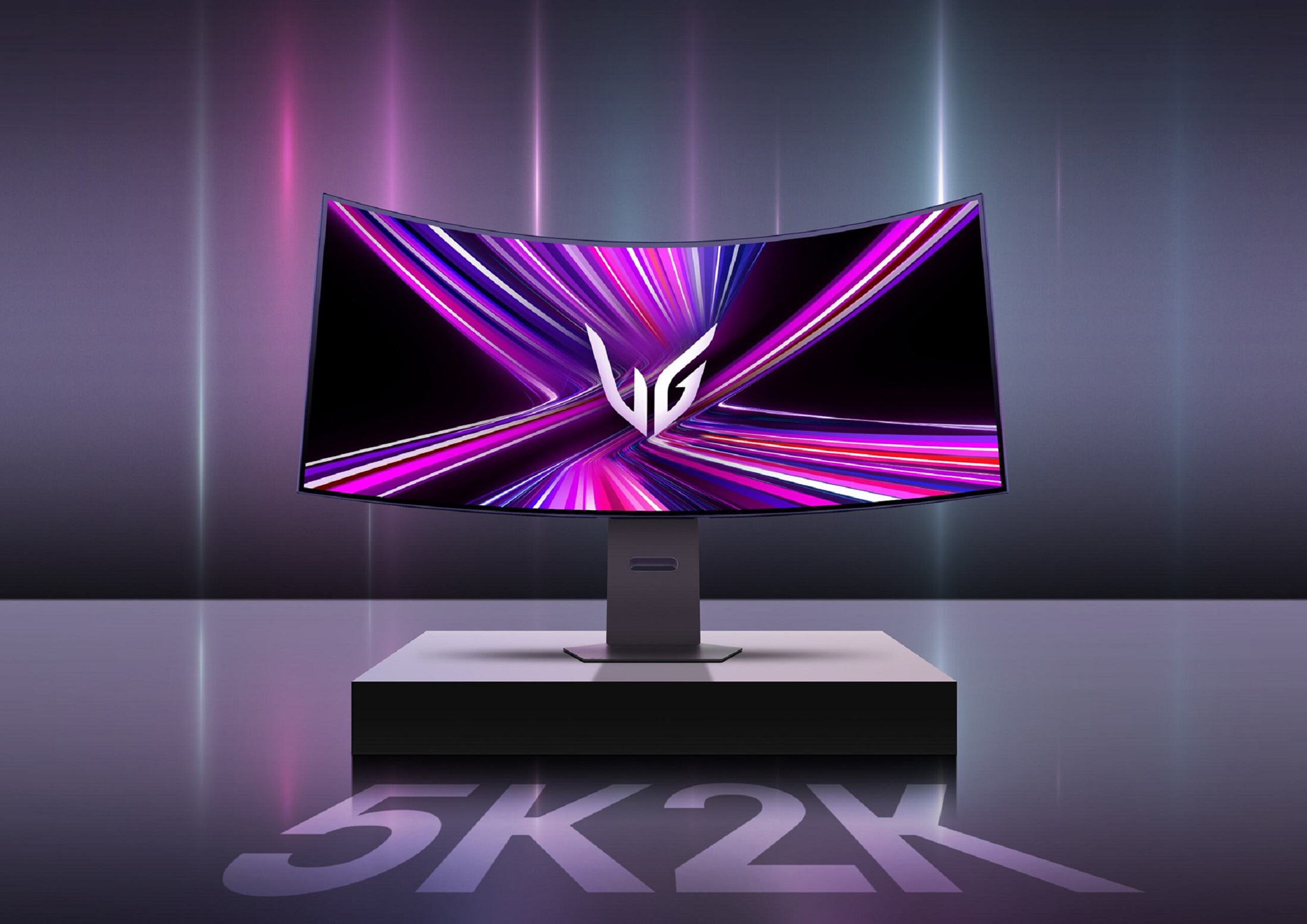
Best super ultrawide gaming monitor for multitaskers
LG UltraGear Gx9
| Screen Size | 45 inches |
| Resolution | 5120 x 1440 (Dual QHD / 5K2K) |
| Panel Type | OLED |
| Aspect Ratio | 32:9 |
| Curve | 800R |
| Refresh Rate | 240Hz |
| Response Time | 0.03ms (GtG) |
| HDR Support | HDR10 |
| Color Coverage | 98.5% DCI-P3 |
| VRR | G-Sync Compatible, FreeSync Premium |
| Brightness | ~200 nits SDR, higher in HDR |
| Ports | 2x HDMI 2.1, 1x DisplayPort 1.4, USB hub |
| Ergonomics | Height, tilt, swivel adjustable |
| Extras | Anti-glare coating, RGB rear lighting |
The LG UltraGear GX9 brings serious firepower for gamers who want a wider, cleaner, and more responsive display setup—without the hassle of dual monitors. Its 45-inch OLED panel stretches across your field of view with a crisp 5K2K resolution (5120×1440), delivering deep contrast, sharp text, and accurate color across an extra-wide canvas. The 240Hz refresh rate and 0.03ms response time push it into elite territory for competitive play, while the 800R curve keeps visuals distortion-free across the edges. This is a screen designed to maximize workspace and gameplay fluidity in equal measure. With native support for both G-Sync and FreeSync, plus HDMI 2.1, it pairs well with high-end rigs and next-gen consoles alike.
| Pros | Cons |
|---|---|
| Immersive 45″ ultrawide OLED with tight curve | Expensive, premium pricing |
| 240Hz refresh rate with lightning-fast 0.03ms | Lower SDR brightness than some LED panels |
| Excellent color and contrast (98.5% DCI-P3) | |
| Great for multitasking and cinematic gaming | |
| G-Sync and FreeSync support out of the box |
The UltraGear GX9 is perfect for gamers who want to go big—not just in screen size but in performance. It’s especially well-suited for:
- Sim and racing fans who want full peripheral immersion
- Multitaskers and streamers needing dual-monitor space on one screen
- Competitive players who don’t want to trade speed for aesthetics
- OLED enthusiasts who want deep blacks without lag or ghosting
If you’re looking for a premium ultrawide that can truly do it all, the GX9 belongs on your shortlist.
get it now
Gaming Monitor Buying Guide
Whether you’re chasing that competitive edge in shooters or diving into vast, story-driven worlds, your choice of monitor sets the stage. In this guide, we’ll walk you through the core features and specs you need to evaluate so you can pick the display that suits your rig, your wallet, and your play style.
Resolution & Screen Size
Higher resolution delivers sharper detail, but demands more GPU power.
1080p (Full HD): Ideal for high refresh rates on mid‑range GPUs—great for esports.
1440p (QHD): Sweet spot for clarity and performance; balances crisp visuals with achievable frame rates.
4K (UHD): Pin‑sharp detail for single‑player and content creation, but requires top‑tier GPUs for high FPS.
Ultrawide (21:9+ or 32:9): Expands your field of view—excellent for racing, sim, and productivity—but needs more GPU muscle to drive extra pixels.
Refresh Rate & Response Time
Fluid gameplay and razor-sharp motion clarity are must-haves when the action gets intense.
Refresh Rate: 144Hz is today’s baseline for gaming; 240Hz+ is reserved for competitive play.
Response Time: under 1ms (GtG or MPRT) help keep fast motion sharp and ghosting out of sight.
Panel Types
The panel tech under the hood shapes everything from color punch to how good your game looks off-center.
TN (Twisted Nematic): TN panels are built for speed, not beauty—expect lightning-fast response times, but don’t count on rich colors or wide angles.
IPS (In‑Plane Switching): Excellent color accuracy and viewing angles with slightly higher response times—is the versatile all‑rounder.
VA (Vertical Alignment): Deep contrast and strong blacks, but can suffer from slower pixel transitions—best for dark‑room immersion.
OLED & QD‑OLED: True blacks, instantaneous response, and vibrant colors—top tier for image quality, though price and burn‑in risk can be factors.
Adaptive Sync (G‑Sync vs. FreeSync)
Eliminate tearing and stutter for a fluid experience.
FreeSync: AMD’s standard, supported on many monitors at varying price points.
G‑Sync Compatible: NVIDIA‑certified FreeSync monitors.
G‑Sync Ultimate: Hardware module on premium monitors—guaranteed latency and HDR performance (often paired with high price).
HDR & Color Accuracy
High Dynamic Range brings highlights and shadows to life—just don’t expect HDR performance to be equal across all panels.
HDR Tiers: Look for DisplayHDR 400 minimum; 600+ for brighter peak highlights and richer mid‑tones.
Color Gamut: Aim for ≥ 95% DCI‑P3 coverage if color fidelity matters (streaming, video editing, immersive titles).
Connectivity & Ports
Match your monitor’s inputs to your hardware’s outputs—and plan for future upgrades.
HDMI 2.1: Required for 4K @120Hz on next‑gen consoles.
DisplayPort 1.4/2.0: DisplayPort 1.4 and 2.0 are what high-res, high-refresh dreams are made of—perfect for serious PC setups.
USB‑C / Thunderbolt: Handy for laptop docks, video, data, and even power delivery in one cable.
USB Hubs & Audio: Built‑in USB ports or a headphone jack can tidy up your desktop.
Ergonomics & Design
Comfort and adjustability matter—especially during marathon sessions.
Adjustments: Look for height, tilt, swivel, and pivot controls.
Bezel & Stand Footprint: Slim bezels improve multi‑monitor setups; compact stands free up desk space.
Extras: RGB lighting, removable shading hoods, or built‑in speakers—nice to have, but secondary to core specs.
Budget & Value
Set realistic expectations based on your spend:
Under $300: You’ll find solid 1080p@144Hz or basic 1440p@75–100Hz panels.
$300–600: Expect 1440p@144Hz IPS, some HDR400, and better build quality.
$600+: High‑refresh 1440p or entry‑4K, OLED/QD‑OLED options, premium ergonomics, and advanced HDR.
Use‑Case Recommendations
Esports & Competitive Shooters: 24–27″, 1080p or 1440p, ≥240Hz, 1ms IPS/TN panel, G‑Sync/FreeSync.
Immersive RPGs & Cinematic Titles: 27–32″, 1440p or ultrawide, 100–144Hz, IPS or VA, good HDR capability.
4K Content & Next‑Gen Consoles: 27″–32″, 4K@120Hz (HDMI 2.1), 1ms+ IPS or OLED, strong HDR.
Productivity & Streaming: Ultrawide (34″+), ≥144Hz, USB‑C connectivity, good color accuracy (≥95% sRGB/DCI‑P3).
Wrap‑Up: We’ve covered the critical specs—resolution, speed, panel tech, sync, HDR, connectivity, ergonomics, and budget tiers. Use this guide to narrow down your shortlist, then dive into hands‑on reviews and user feedback for your final pick. Happy hunting!
